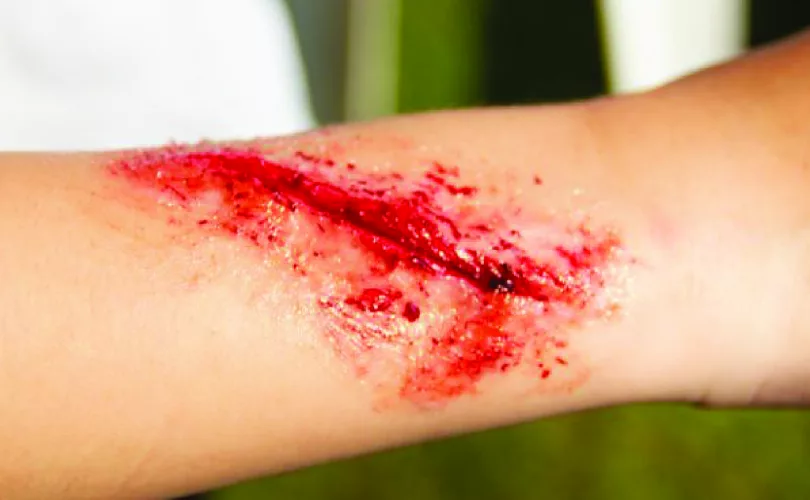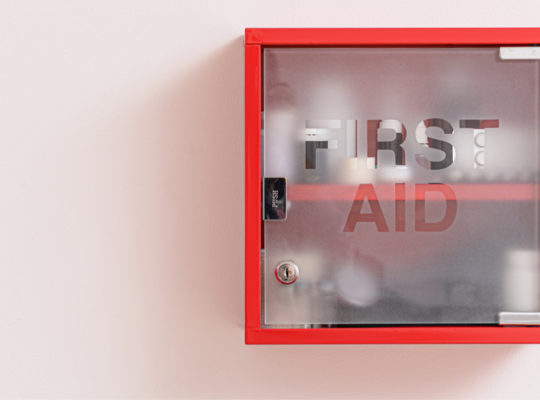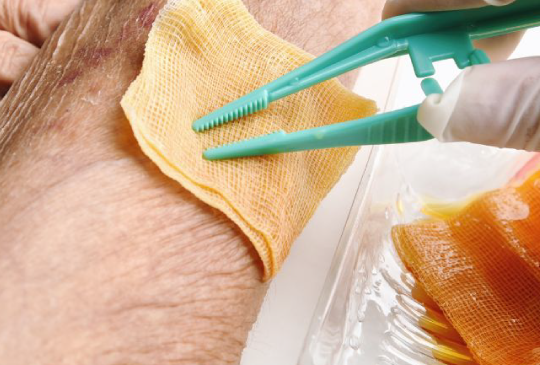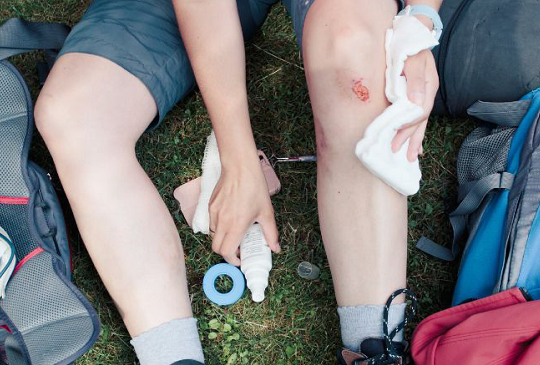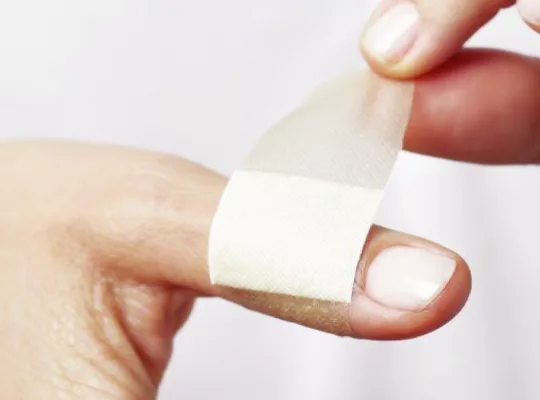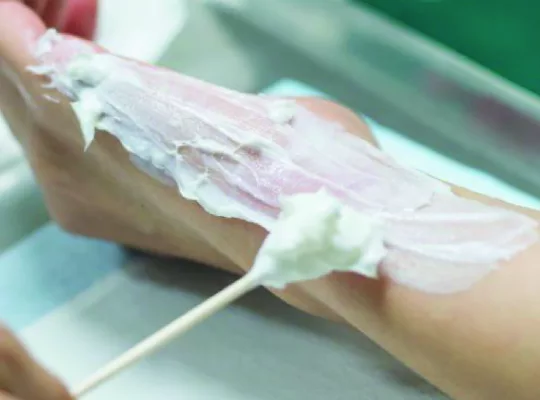Proper treatment of open wounds is crucial for preventing infection and promoting healing. Treatment involves several key steps, including cleaning the wound to remove debris and bacteria, applying an appropriate dressing to protect the injury and promote healing, and monitoring for signs of infection or complications.
Butterfly bandage vs stitches? The choice of treatment can vary depending on the type and severity of the wound. In some cases, the wound even needs a pressure bandage It’s essential to seek medical advice for severe or deep wounds, as they may require stitches or other advanced treatments.
Comprehensive Guide to Open Wound Care: Types, Treatments, and Prevention
Open wounds are of many types from minor scrapes to deep lacerations. They’re common injuries requiring careful attention to ensure proper healing and prevent complications. Whether everyday accidents or more severe incidents cause it doesn’t matter. Understanding the types of injuries and how to manage them is essential for everyone’s well-being.
Understanding Open Wounds
These injuries are caused by broken skin exposing underlying tissues. These include:
- Muscles
- Tendons
- Bones
They can result from various incidents such as:
- Falls
- Sharp objects
- Sports activities
Their severity depends on its depth and the extent of tissue damage. Many small injuries can be treated at home with basic first aid. Yet, more extensive or deeper injuries may require professional medical intervention to ensure proper closure and prevent infection.
Types
Abrasion: This injury occurs when the skin scrapes or rubs against a hard, uneven surface, causing abrasions. This causes superficial damage. Commonly known as road rash, these wounds usually involve minimal bleeding. Yet, they need thorough cleaning to remove dirt and debris that can lead to infection.
Laceration: A deep tearing of the skin caused by a sharp object such as a knife, glass, or machinery. Lacerations can vary in severity and tend to bleed profusely due to damage to blood vessels. Depending on the depth and location of the laceration, medical evaluation may be necessary to assess the need for stitches or other interventions to facilitate proper healing.
Puncture: Puncture wounds are caused by pointed objects such as nails, needles, or animal bites. These wounds may have low external bleeding. However, they can introduce bacteria deep into the tissues, increasing the risk of infection. Medical evaluation is crucial for puncture wounds. Doctors assess the need for a shot for tetanus to ensure proper wound care and prevent complications.
Avulsion: It occurs when a portion of the skin and underlying tissue is wholly or partially torn away from the body. These injuries often result from accidents involving machinery, explosions, or severe trauma. Avulsions require immediate medical attention to control bleeding, prevent infection, and promote tissue healing.
Home Treatment
Butterfly bandage vs stitches? Minor wounds that are shallow and not excessively bleeding can often be managed effectively at home with the following steps. Rinse the wound thoroughly with clean water to remove any unwanted debris. Use a mild soap to cleanse the area around the wound gently. Apply an antiseptic solution such as hydrogen peroxide or iodine to the injuries to reduce the risk of infection. When handling wounds that involve bleeding, using a Body Fluid Clean Up Kit ensures proper hygiene by safely cleaning and disposing of contaminated materials.
Cover the wound with a sterile bandage or non-stick gauze pad to protect it from further contamination and promote healing. Monitor the injury for any signs of infection, such as increased redness, swelling, or discharge. Change the dressing regularly, ensuring the injuries remain clean and dry. You can also use Bacitracin Ointment 1 oz to prevent infection in case of minor cut wounds and scrapes.
Seeking Medical Attention for Severe Injuries
For larger, more profound, or more complex wounds, it’s essential to seek prompt medical care to prevent complications and ensure proper healing:
Closure
Deep injuries may require medical closure using techniques such as stitches (sutures), staples, or medical glue to bring the wound’s edges together and facilitate healing.
Pain Management
Depending on the severity, pain relievers may be prescribed to alleviate discomfort during the healing process.
Tetanus Prevention
Tetanus shots are often recommended for wounds that involve significant tissue damage or are contaminated with dirt or debris to prevent tetanus infection.
Antibiotics
Antibiotics may be prescribed to treat the disease effectively and promote healing if there’s a risk of infection or an infection develops.
Open Wounds Risks
The primary concern with open injuries is infection. It can lead to more severe health issues if left untreated. Signs of infection include Increased pain, redness, or swelling around the wound. Pus or discharge from the wound may be yellow, green, or foul-smelling. Fever and chills indicate a systemic response to infection.
Prompt medical attention is crucial if any signs of infection develop or the wound does not heal as expected. In severe cases, untreated infections can lead to complications such as:
Cellulitis: A bacterial infection of the skin and underlying tissues that can spread rapidly if not treated promptly with antibiotics.
Necrotizing Fasciitis: A rare but serious bacterial infection that affects the deeper layers of skin and soft tissues, often requiring surgical intervention to remove infected tissue.
Sepsis: A life-threatening condition where the body’s immune response to infection causes widespread inflammation and organ dysfunction.
When to Seek a Doctor
While minor injuries can often be managed at home with proper care, certain circumstances require immediate medical attention:
Deep Wounds
If the wound is more profound than half an inch (about 1.25 centimeters) or exposes underlying tissues such as muscles, tendons, or bones.
Uncontrolled Bleeding
If bleeding does not stop with direct pressure after 10 to 20 minutes of continuous pressure.
Signs of Infection
If the injury becomes increasingly red, swollen, or painful, or if there’s drainage of pus or foul-smelling discharge from the injuries.
Delayed Healing
If the wound shows no improvement or healing within a few days or if there are signs of complications such as fever or chills.
Conclusion
Proper wound care is essential for promoting healing. It prevents infection and minimizes the risk of complications associated with open wounds. By understanding the different types of wounds and their appropriate treatments, individuals can take proactive steps to manage minor injuries at home while recognizing when professional medical intervention is necessary.
Prioritizing wound care supports recovery and ensures optimal long-term health and well-being outcomes. Always seek medical attention promptly for any concerns regarding wound healing or signs of infection, as early intervention can significantly impact recovery and reduce the risk of complications.

